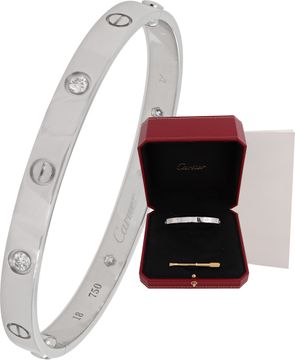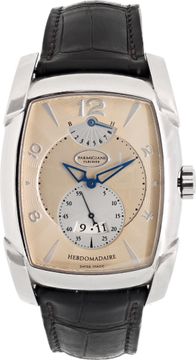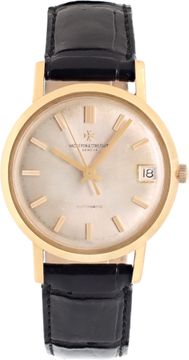Two-Tone Divers: Rolex Submariner vs. Omega Seamaster Diver
 The battle between the Rolex Submariner vs. Omega Seamaster Diver has been a long one in the luxury watch space. Both fantastic diving watches available in a range of metals and styles, the Submariner Date and the Seamaster Diver 300M enjoy their own passionate fan bases. Today, we take a look at two luxurious versions of these popular diver’s watches by comparing the two-tone Rolex Submariner Date ref. 116613LN with the two-tone Omega Seamaster Diver 300M ref. 210.20.42. In case you need a refresh, the Rolex Submariner 116613LN made its debut in 2009 while the Omega Seamaster Diver 300M 210.20.42 was launched in 2018–so both models are current.
The battle between the Rolex Submariner vs. Omega Seamaster Diver has been a long one in the luxury watch space. Both fantastic diving watches available in a range of metals and styles, the Submariner Date and the Seamaster Diver 300M enjoy their own passionate fan bases. Today, we take a look at two luxurious versions of these popular diver’s watches by comparing the two-tone Rolex Submariner Date ref. 116613LN with the two-tone Omega Seamaster Diver 300M ref. 210.20.42. In case you need a refresh, the Rolex Submariner 116613LN made its debut in 2009 while the Omega Seamaster Diver 300M 210.20.42 was launched in 2018–so both models are current.
Design: Rolex Submariner vs. Omega Seamaster Diver
At first glance, the two-tone Rolex Submariner 116613LN and the two-tone Omega Seamaster Diver 300M 210.20.42 look quite similar. After all, both dive watches use a mix of stainless steel and yellow gold, both have unidirectional rotating black ceramic dive bezels, and both have black dials. However, there are a few notable design differences to point out.

The Rolex Submariner 116613LN features a 40 mm case while the Omega Seamaster Diver 300M 210.20.42 sports a slightly larger 42 mm case. The pair of watches both include a yellow gold winding crown yet the Seamaster Diver also features a yellow gold helium escape valve at 10 o’clock.
What’s more, the Submariner houses a black lacquered dial void of any decoration while the Seamaster Diver includes a black ceramic dial blanketed with laser-engraved waves. Both dials have similar lume-filled hour markers framed with yellow gold surrounds but the Submariner’s date window is located at 3 o’clock while the Seamaster Diver’s date is at 6 o’clock.

Bracelet wise, both the Seamaster Diver and the Submariner use a melange of stainless steel and yellow gold. However, in different configurations. The Submariner’s three-link Oyster bracelet includes yellow gold center links flanked by steel links while the Seamaster’s five-link bracelet has less yellow gold accents running through the length of the bracelet. As diving watches, both Rolex and Omega have fitted the bracelets with practical extension systems to accommodate thick wet suits.
Flip the watches around and you’ll soon see that the Caliber 3135 inside the Submariner is protected by a screw-down caseback while the Seamaster’s Master Chronometer Calibre 8800 can be seen via a sapphire caseback.

Mechanics: Rolex Submariner vs. Omega Seamaster Diver
In terms of movements, both the Rolex Submariner Date and the Omega Seamaster Diver 300M are automatic chronometer-rated watches. The Submariner’s COSC-certified Caliber 3135 offers a power reserve of 48 hours and an accuracy rating of -2/+2 seconds per day.

The Caliber 8800 from Omega is what the brand calls a “Master Chronometer,” having passed both COSC standards as well as a series of METAS tests. Its power reserve is 55 hours, its accuracy rating is 0/+5 seconds per day, and it is antimagnetic up to 15,000 gauss.
The Submariner and the Seamaster Diver are both water resistant to 300 meters–well within the standards laid out by ISO to qualify as a dive watch. However, the Seamaster Diver does have the addition of a helium escape valve for saturation diving.

From the exterior design to the interior mechanics, it’s clear that the two-tone Omega Seamaster Diver 300M and the two-tone Rolex Submariner Date are more similar than they are different. You cannot go wrong with either dive watch–they both hail from highly respected Swiss watch brands who have been making divers since the 1950s. It’s simply a matter of personal preference and budget–the two-tone Submariner is about $3,500 more than the two-tone Seamaster Diver at retail. Regardless of which option you think is best, the battle between the Rolex Submariner vs. Omega Seamaster Diver will likely continue for decades to come.

This Father’s Day, Treat Yourself To One of These Luxury Sports Watches
NEXT ARTICLE
A Tribute to the First: Panerai Radiomir 1936 PAM 249






